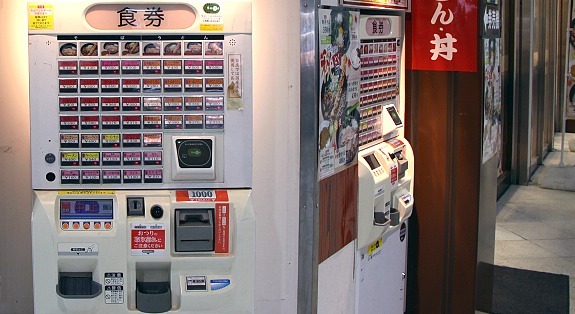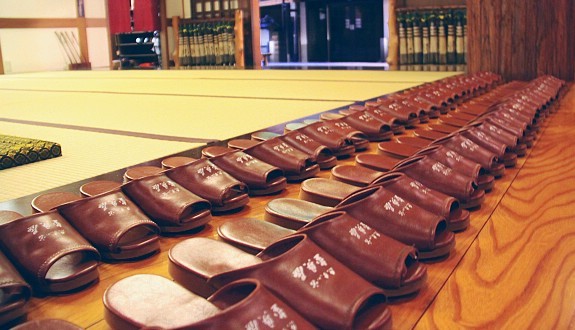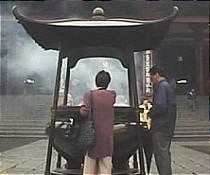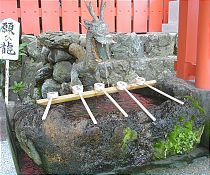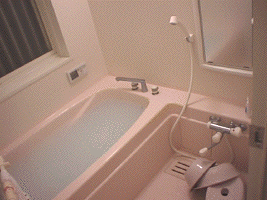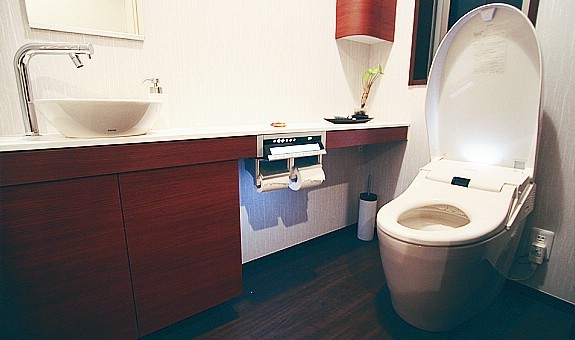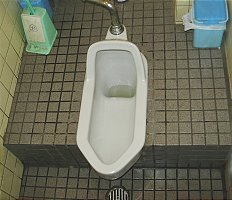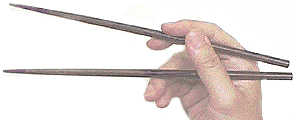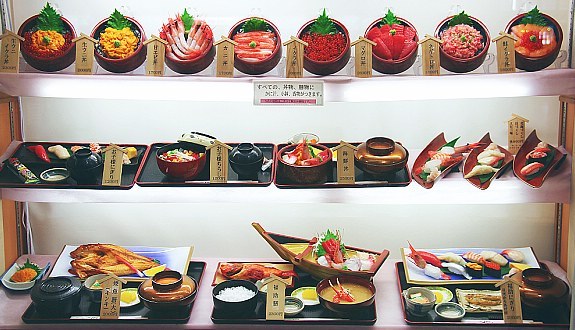 Show window displaying food replicas
Show window displaying food replicas
Japan has a large selection of
restaurants of an almost endless variety. While every place is different, the following points will help make dining out in Japan a smooth and enjoyable experience.

Entering the Restaurant
Many
restaurants in Japan display
plastic or wax replicas of their dishes in a window near their entrance. These replicas serve both to entice and inform patrons of the restaurant's menu and tend to offer an accurate, visual description of the style and price of meals found inside. The displays are especially helpful for foreign tourists who do not read and speak Japanese. For if all other forms of communication fail, you can go outside and point to what you want to order.
Upon entering a restaurant, customers are greeted with the expression "irasshaimase" meaning "welcome, please come in". The waiter or waitress will ask you how many people are in your party and then lead you to your table. Only in rare cases, are customers expected to seat themselves.
While a majority of restaurants in Japan provide Western style tables and chairs, low traditional tables where you sit on pillows on the floor are also common and referred to as zashiki. Many restaurants feature both, and you may be asked which you prefer. In case of zashiki style seating, you should remove your shoes at the entrance to the restaurant or before stepping onto the seating area.
Smoking is permitted in many restaurants in Japan. Some restaurants provide both smoking (kitsuen) and non-smoking (kinen) sections, while others are fully smoking or non-smoking. If there is a choice, the waitress will ask you about your preference before seating you.
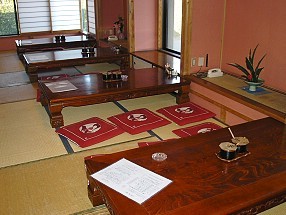 Traditional style zashiki seating on the floor
Traditional style zashiki seating on the floor
|
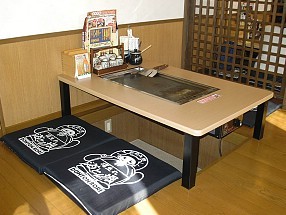 Low table with a sunken floor for your legs
Low table with a sunken floor for your legs
|
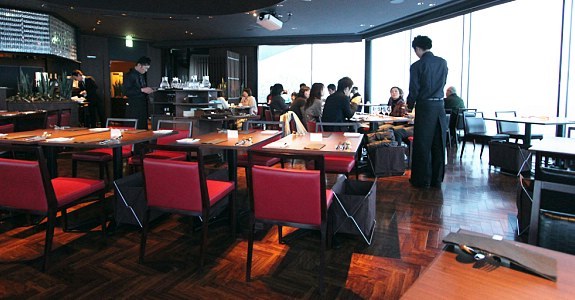 Modern style restaurant with Western style tables and chairs
Modern style restaurant with Western style tables and chairs
Ordering and Eating
After you are seated, each diner is usually served with a free glass of water or
tea. If it is not served, free water or tea is usually available for self service somewhere in the restaurant. Everyone will also receive a wet towel (oshibori) which is used to clean your hands before eating. If
chopsticks are not already set, you can usually find some in a box on the table. Most often, they are disposable wooden chopsticks that need to be separated into two before usage.
While many restaurants provide illustrated menus, other restaurants may only have Japanese text based menus, or the restaurant's offerings may instead be posted on the walls. If you are ever in doubt on what to order or find that you cannot read the menu, try asking for the recommendations (osusume) or the chef's choice (omakase). The latter will often get you some surprisingly good, prix fix style meals, but be prepared to be adventurous and do not expect it to be cheap.
Once you are ready to order, you can signal the restaurant staff by saying "sumimasen" (excuse me), or if available, press the call button at the table. Once you have finished ordering, the waitress will often repeat your order back to you for confirmation.
At some restaurants, such as
izakaya, it is common for everyone in the party to order dishes together and share them. At other establishments, however, each diner is expected to order individually.
 Illustrated menu at a typical family restaurant
Illustrated menu at a typical family restaurant
|
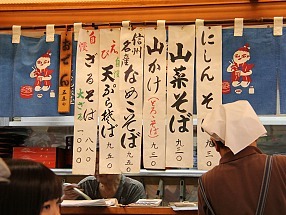 Menu displayed on the wall
Menu displayed on the wall
|
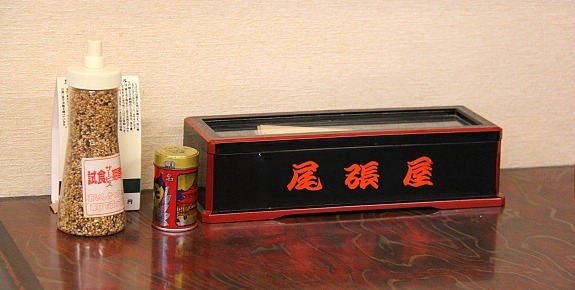 Chopsticks box
Chopsticks box
Paying
The bill will be presented upside down, either as you receive the meal or after you have finished eating. In most restaurants, you are supposed to bring your bill to the cashier near the exit when leaving, as it is not common to pay at the table. Paying in cash is most common, although more and more restaurants also accept credit cards or IC cards such as
Suica.
Some
restaurants, especially cheaper ones, have slightly different systems for ordering and paying. For example, in many
ramen and
gyudon restaurants, "meal tickets" are bought at a vending machine near the store's entrance and handed over to the staff who then prepare and serve the meal.
It is not customary to tip in Japan, and if you do, you will probably find the restaurant staff chasing you down in order to give back any money left behind. Instead, it is polite to say "gochisosama deshita" ("thank you for the meal") when leaving.
